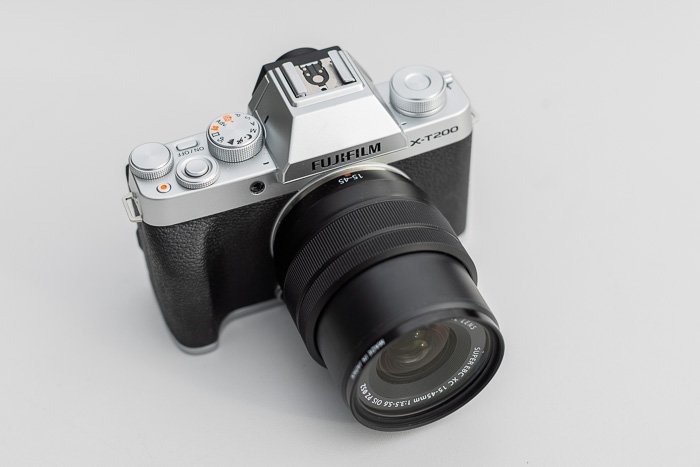Capturing the moon’s intricate details requires a lens that can handle the task, and Canon lenses for moon photography are among the best options available. They offer the clarity and focal length needed to bring the moon’s surface closer to Earth. And this makes them ideal for both amateur and professional photographers looking to improve their lunar shots.
Our top choice, the Canon RF 600mm f/11 IS STM, stands out for its impressive reach and image stabilization, making it perfect for detailed moon photography. It’s our go-to for its balance of performance, ease of use, and price. However, there are four other Canon lenses that also excel in moon photography, offering a range of options to suit different needs and budgets.
Our Top 3 Canon Lenses for Moon Photography
Canon RF 600mm F/11 IS STM
Canon RF 600mm F/11 IS STM
Shop Offers
×
Canon RF 600mm F/11 IS STM Deals
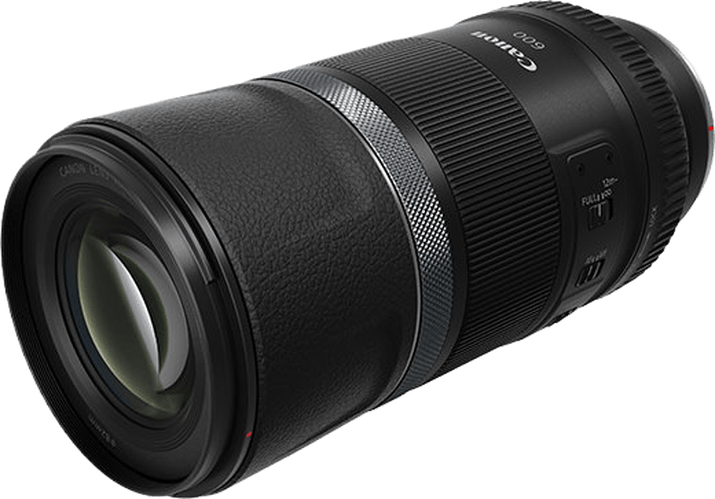
|
(second hand)
Check Price
|
(second hand)
|
Check Price
|
Buy Now!
|
If you buy a product through one of our referral links we will earn a commission (without costing you anything).
Prices last updated on .
As an Amazon Associate, I earn from qualifying purchases. Product prices and availability are accurate as of the date/time indicated and are subject to change. Any price and availability information displayed on Amazon at the time of purchase will apply to the purchase of this product.
Unavailable
Canon EF 600mm F/4L IS III USM
Canon EF 600mm F/4L IS III USM
Shop Offers
×
Canon EF 600mm F/4L IS III USM Deals
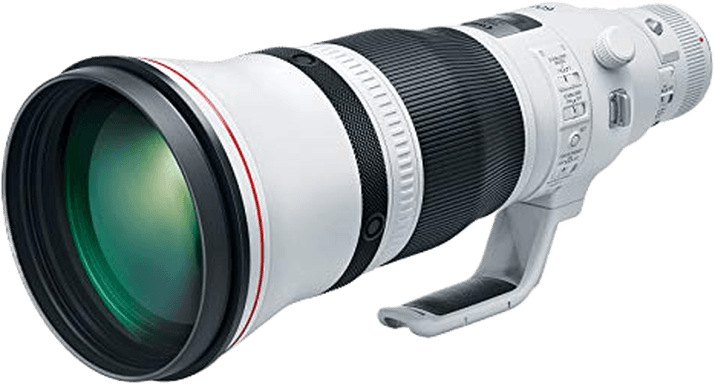
|
(second hand)
Check Price
|
(second hand)
|
Check Price
|
Buy Now!
|
If you buy a product through one of our referral links we will earn a commission (without costing you anything).
Prices last updated on .
As an Amazon Associate, I earn from qualifying purchases. Product prices and availability are accurate as of the date/time indicated and are subject to change. Any price and availability information displayed on Amazon at the time of purchase will apply to the purchase of this product.
Unavailable
Canon EF 500mm F/4L IS II USM
Canon EF 500mm F/4L IS II USM
Shop Offers
×
Canon EF 500mm F/4L IS II USM Deals
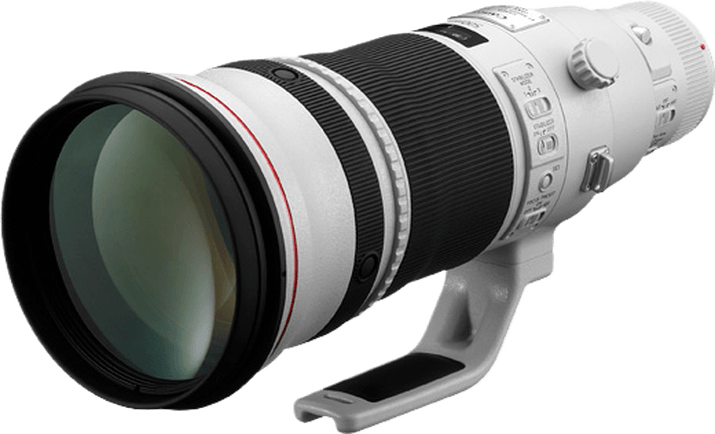
|
(second hand)
Check Price
|
(second hand)
|
Check Price
|
Buy Now!
|
If you buy a product through one of our referral links we will earn a commission (without costing you anything).
Prices last updated on .
As an Amazon Associate, I earn from qualifying purchases. Product prices and availability are accurate as of the date/time indicated and are subject to change. Any price and availability information displayed on Amazon at the time of purchase will apply to the purchase of this product.
Unavailable
What Is the Best Canon Lens for Moon Photography?
Selecting the best Canon lens for moon photography involves considering focal length, aperture, and weight. Our list prioritizes lenses that offer sharp, detailed lunar images, with the Canon RF 600mm f/11 IS STM leading due to its balance of reach and manageability. Each lens is chosen for its ability to capture the moon’s intricate details, ensuring photographers can achieve stunning lunar shots.
Our Top Pick
Canon RF 600mm F/11 IS STM
Canon RF 600mm F/11 IS STM
- Unmatched reach for detailed moon shots
- Lightweight design enhances portability
- Impressive sharpness across the frame
- Effective 5-stop image stabilization
- Optimized for Canon's mirrorless lineup
Shop Offers
×
Canon RF 600mm F/11 IS STM Deals

|
(second hand)
Check Price
|
(second hand)
|
Check Price
|
Buy Now!
|
If you buy a product through one of our referral links we will earn a commission (without costing you anything).
Prices last updated on .
As an Amazon Associate, I earn from qualifying purchases. Product prices and availability are accurate as of the date/time indicated and are subject to change. Any price and availability information displayed on Amazon at the time of purchase will apply to the purchase of this product.
Unavailable
Best for Wildlife Photography
Canon EF 600mm F/4L IS III USM
Canon EF 600mm F/4L IS III USM
- Superior low-light performance with f/4 aperture
- Ideal for wildlife and sports photography
- Robust, weather-sealed construction
- Exceptional image quality and sharpness
- Fast, precise autofocus system
Shop Offers
×
Canon EF 600mm F/4L IS III USM Deals

|
(second hand)
Check Price
|
(second hand)
|
Check Price
|
Buy Now!
|
If you buy a product through one of our referral links we will earn a commission (without costing you anything).
Prices last updated on .
As an Amazon Associate, I earn from qualifying purchases. Product prices and availability are accurate as of the date/time indicated and are subject to change. Any price and availability information displayed on Amazon at the time of purchase will apply to the purchase of this product.
Unavailable
Best for Handheld Shooting
Canon EF 500mm F/4L IS II USM
Canon EF 500mm F/4L IS II USM
- Exceptional clarity for distant wildlife shots
- Robust, weather-sealed for harsh conditions
- Advanced stabilization for sharp handheld images
- Fast, silent autofocus perfect for nature photography
- Superior optical performance with minimal aberration
Shop Offers
×
Canon EF 500mm F/4L IS II USM Deals

|
(second hand)
Check Price
|
(second hand)
|
Check Price
|
Buy Now!
|
If you buy a product through one of our referral links we will earn a commission (without costing you anything).
Prices last updated on .
As an Amazon Associate, I earn from qualifying purchases. Product prices and availability are accurate as of the date/time indicated and are subject to change. Any price and availability information displayed on Amazon at the time of purchase will apply to the purchase of this product.
Unavailable
Best Versatile Zoom Lens
Canon EF 70-200mm F/2.8L IS III USM
Canon EF 70-200mm F/2.8L IS III USM
- Versatile zoom range for diverse photography needs
- Constant f/2.8 aperture for low-light excellence
- Robust, weather-sealed construction for reliability
- Exceptional image quality with pleasing bokeh
- Fast, accurate autofocus with image stabilization
Shop Offers
×
Canon EF 70-200mm F/2.8L IS III USM Deals
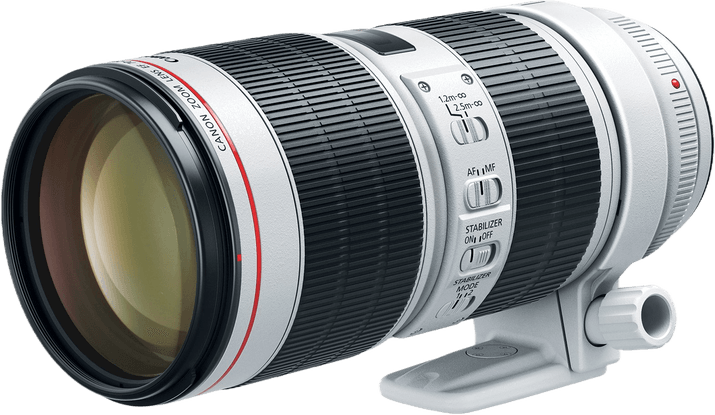
|
(second hand)
Check Price
|
(second hand)
|
Check Price
|
Buy Now!
|
If you buy a product through one of our referral links we will earn a commission (without costing you anything).
Prices last updated on .
As an Amazon Associate, I earn from qualifying purchases. Product prices and availability are accurate as of the date/time indicated and are subject to change. Any price and availability information displayed on Amazon at the time of purchase will apply to the purchase of this product.
Unavailable
Best Lightweight Telephoto Lens
Canon EF 400mm F/4 DO IS II USM
Canon EF 400mm F/4 DO IS II USM
- Advanced Diffractive Optics for compact design
- Exceptional sharpness with minimal aberrations
- Effective 4-stop image stabilization system
- Fast and silent autofocus performance
- Durable, weather-sealed construction for outdoor use
Shop Offers
×
Canon EF 400mm F/4 DO IS II USM Deals
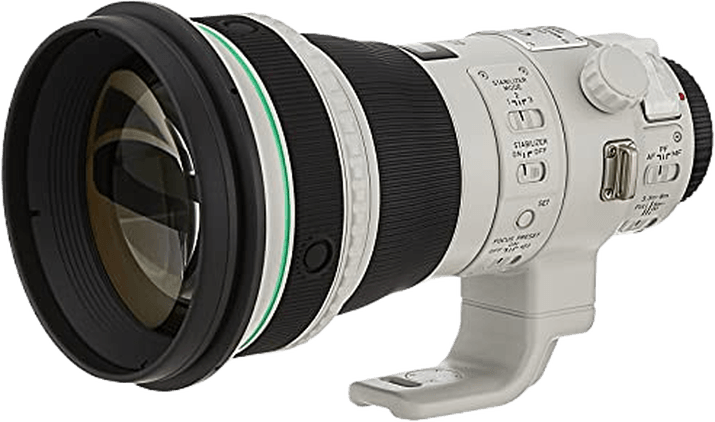
|
(second hand)
Check Price
|
(second hand)
|
Check Price
|
Buy Now!
|
If you buy a product through one of our referral links we will earn a commission (without costing you anything).
Prices last updated on .
As an Amazon Associate, I earn from qualifying purchases. Product prices and availability are accurate as of the date/time indicated and are subject to change. Any price and availability information displayed on Amazon at the time of purchase will apply to the purchase of this product.
Unavailable
Our Favorite Canon Lenses for Moon Photography
Let’s take a closer look at the Canon lenses for moon photography that we’ve picked. There are fast, expensive prime lenses, and more affordable ones too. From the powerful reach of 600mm lenses to the versatility of zoom options, there’s a perfect fit for everyone’s bag.
1. Canon RF 600mm f/11 IS STM
Our Top Pick
Shop Offers
×
Canon RF 600mm F/11 IS STM Deals

|
(second hand)
Check Price
|
(second hand)
|
Check Price
|
Buy Now!
|
If you buy a product through one of our referral links we will earn a commission (without costing you anything).
Prices last updated on .
As an Amazon Associate, I earn from qualifying purchases. Product prices and availability are accurate as of the date/time indicated and are subject to change. Any price and availability information displayed on Amazon at the time of purchase will apply to the purchase of this product.
Unavailable

Shop Offers
×
Canon RF 600mm F/11 IS STM Deals

|
(second hand)
Check Price
|
(second hand)
|
Check Price
|
Buy Now!
|
If you buy a product through one of our referral links we will earn a commission (without costing you anything).
Prices last updated on .
As an Amazon Associate, I earn from qualifying purchases. Product prices and availability are accurate as of the date/time indicated and are subject to change. Any price and availability information displayed on Amazon at the time of purchase will apply to the purchase of this product.
Unavailable
|
Brand |
Brand
Canon
|
|
Lens Weight |
Lens Weight
930 g
|
|
Maximum Aperture |
Maximum Aperture
f/ 11.0
|
|
Focal Length Range |
Focal Length Range
600 mm
|
|
Image Stabilization |
Image Stabilization
|
Canon RF 600mm F/11 IS STM
The
Canon RF 600mm f/11 IS STM is a collapsible prime lens that is well-suited to moon photography due to its impressive 600mm focal length. This focal length allows you to fill the frame with the lunar surface. Its fixed f/11 aperture, while not ideal for all photography types, works well under the bright conditions of moon photography.
The lens isn’t as fast as, say, the Canon EF 600mm f/4L IS III USM, which offers a wider f/4 aperture. But then, it costs only about 7% of the price of the faster lens. And for moon photography, the speed really isn’t a big deal. If you plan to use the lens for other tasks like wildlife or sports, then it might be a consideration. But for the moon, this is ideal.
Weighing just 2.05 lbs (930 g), the Canon RF 600mm f/11 IS STM is notably lighter than many super-telephoto lenses, making it easier to manage during long photography sessions. It’s pretty compact too, given the rather clever collapsible design. When not in use, the lens retracts to about 2/3 of its fun length. This makes it easy to fit into most camera bags. Most of all its sharpness and minimal chromatic aberration make it a good option for those looking to capture the moon’s intricate details without the burden of a heavier, bulkier lens setup.
2. Canon EF 600mm f/4L IS III USM
Best for Moon Photography Professionals
Shop Offers
×
Canon EF 600mm F/4L IS III USM Deals

|
(second hand)
Check Price
|
(second hand)
|
Check Price
|
Buy Now!
|
If you buy a product through one of our referral links we will earn a commission (without costing you anything).
Prices last updated on .
As an Amazon Associate, I earn from qualifying purchases. Product prices and availability are accurate as of the date/time indicated and are subject to change. Any price and availability information displayed on Amazon at the time of purchase will apply to the purchase of this product.
Unavailable

Shop Offers
×
Canon EF 600mm F/4L IS III USM Deals

|
(second hand)
Check Price
|
(second hand)
|
Check Price
|
Buy Now!
|
If you buy a product through one of our referral links we will earn a commission (without costing you anything).
Prices last updated on .
As an Amazon Associate, I earn from qualifying purchases. Product prices and availability are accurate as of the date/time indicated and are subject to change. Any price and availability information displayed on Amazon at the time of purchase will apply to the purchase of this product.
Unavailable
|
Brand |
Brand
Canon
|
|
Lens Weight |
Lens Weight
3050 g
|
|
Maximum Aperture |
Maximum Aperture
f/ 4.0
|
|
Focal Length Range |
Focal Length Range
600 mm
|
|
Image Stabilization |
Image Stabilization
|
Canon EF 600mm F/4L IS III USM
The
Canon EF 600mm f/4L IS III USM is a stunning super-telephoto at a stunning price. Make no mistake, only the specialist or super-rich will be buying one of these beauties. What you get for your money is unequaled sharpness and a very fast f/4 maximum aperture. That’s not so significant for moon photography. But if you have one of these, you’ll want to use it for other things too.
Weighing in at about 6.7 lbs (3 kg), this lens is surprisingly light for its size. Canon has upgraded the construction to include magnesium and titanium. This makes it easier to handle during long nights of shooting. The built-in image stabilization is effective up to 5 stops. There aren’t many times you’ll be able to use this lens handheld, but the IS is still important. First of all, it has selectable modes, and you can use it mounted on a tripod and still benefit from the IS as you pan. Secondly, Canon has introduced an innovation in the IS. Even when it is turned on, it isn’t activated until you press the shutter button. A half-press activates the sensors, without affecting the image in the viewfinder. Only when you fire the shutter does the IS actually kick in.
Optically, the lens is remarkable, with elements that reduce chromatic aberration and ensure edge-to-edge sharpness. This is critical for moon photography, where every detail counts. The autofocus is quick and silent, but for moon shots, the manual focus override allows for precise adjustments, ensuring the moon’s features are crisp. And focus can be auto, manual, or servo-powered. And that’s perfect for video work.
In summary, the Canon EF 600mm f/4L IS III USM is a top choice for moon photography. It’s a combination of long reach, wide aperture, and lightweight design. And taken with its exceptional optical quality, it all makes for a very useful tool for capturing the moon’s intricate details.
3. Canon EF 500mm f/4L IS II USM
Best 500mm Prime Lens
Shop Offers
×
Canon EF 500mm F/4L IS II USM Deals

|
(second hand)
Check Price
|
(second hand)
|
Check Price
|
Buy Now!
|
If you buy a product through one of our referral links we will earn a commission (without costing you anything).
Prices last updated on .
As an Amazon Associate, I earn from qualifying purchases. Product prices and availability are accurate as of the date/time indicated and are subject to change. Any price and availability information displayed on Amazon at the time of purchase will apply to the purchase of this product.
Unavailable

Shop Offers
×
Canon EF 500mm F/4L IS II USM Deals

|
(second hand)
Check Price
|
(second hand)
|
Check Price
|
Buy Now!
|
If you buy a product through one of our referral links we will earn a commission (without costing you anything).
Prices last updated on .
As an Amazon Associate, I earn from qualifying purchases. Product prices and availability are accurate as of the date/time indicated and are subject to change. Any price and availability information displayed on Amazon at the time of purchase will apply to the purchase of this product.
Unavailable
|
Brand |
Brand
Canon
|
|
Lens Weight |
Lens Weight
3190 g
|
|
Maximum Aperture |
Maximum Aperture
f/ 4.0
|
|
Focal Length Range |
Focal Length Range
500 mm
|
|
Image Stabilization |
Image Stabilization
|
Canon EF 500mm F/4L IS II USM
The
Canon EF 500mm f/4L IS II USM is the slightly shorter sibling of the 600mm lens. But it’s about half the price. So it’s worth considering how much you need that extra 100mm of reach. You’ll find the same exceptional sharpness, ensuring that the moon’s surface features are captured with clarity from edge to edge.
Weighing around 7 lbs (3.2 kg), this lens is relatively light for its class, which is a significant advantage when setting up for long photography sessions focused on the moon. The built-in image stabilization, offering up to four stops of shake reduction, is helpful for those rare handheld shots or when using lighter tripods that might sway in the wind.
Optically, the lens includes elements that minimize chromatic aberration, a common issue when photographing bright objects against a dark sky, like the moon. This ensures that the edges of the moon are free from unwanted color fringes, making the image quality pristine. The manual focus override feature is particularly useful for moon photography, allowing for precise adjustments to ensure the moon’s surface is perfectly in focus. And the focus can be powered as well, which is great for videographers.
There’s no denying this is an expensive lens. It’s one of Canon’s L-Series pro-level lenses. It has the robust construction and weather sealing you’d expect from that. So it won’t flinch at harsh conditions although you won’t be taking many moon shots in the rain!). But you’ll want to use it for sports or wildlife photography. And there the weather seals are vital.
4. Canon EF 70-200mm f/2.8L IS III USM
Best Versatile Zoom Lens
Shop Offers
×
Canon EF 70-200mm F/2.8L IS III USM Deals

|
(second hand)
Check Price
|
(second hand)
|
Check Price
|
Buy Now!
|
If you buy a product through one of our referral links we will earn a commission (without costing you anything).
Prices last updated on .
As an Amazon Associate, I earn from qualifying purchases. Product prices and availability are accurate as of the date/time indicated and are subject to change. Any price and availability information displayed on Amazon at the time of purchase will apply to the purchase of this product.
Unavailable

Shop Offers
×
Canon EF 70-200mm F/2.8L IS III USM Deals

|
(second hand)
Check Price
|
(second hand)
|
Check Price
|
Buy Now!
|
If you buy a product through one of our referral links we will earn a commission (without costing you anything).
Prices last updated on .
As an Amazon Associate, I earn from qualifying purchases. Product prices and availability are accurate as of the date/time indicated and are subject to change. Any price and availability information displayed on Amazon at the time of purchase will apply to the purchase of this product.
Unavailable
|
Brand |
Brand
Canon
|
|
Lens Weight |
Lens Weight
1440 g
|
|
Maximum Aperture |
Maximum Aperture
f/ 2.8
|
|
Focal Length Range |
Focal Length Range
70-200 mm
|
|
Image Stabilization |
Image Stabilization
|
Canon EF 70-200mm F/2.8L IS III USM
The
Canon EF 70-200mm f/2.8L IS III USM is not specifically designed for activities such as moon photography. The focal length is a little short for the best results. But, don’t write it off. First of all, because it is a superb lens with a well-deserved excellent reputation. And secondly, it works perfectly with the
Canon 2 x teleconverter.
Weighing approximately 3.5 lbs (1.5 kg), this lens is barely manageable for handheld shooting. However, that matters little because for moon photography you will need a tripod. The built-in image stabilization can be useful for quick handheld shots or when using lighter tripods. It is also selectable, so tracking panning shots can be accommodated easily.
Optically, the lens includes elements that reduce chromatic aberration, ensuring the moon’s edges are crisp and free from color fringing. The manual focus override allows for precise focusing, crucial for capturing detailed lunar landscapes.
In summary, the Canon EF 70-200mm f/2.8L IS III USM is a good option for photographers looking for a versatile lens for moon photography. It is equally at home at weddings, soccer games, and concerts. Moon photography is just another area where you’ll appreciate its sharpness and accuracy.
5. Canon EF 400mm f/4 DO IS II USM
Best Lightweight Telephoto Lens
Shop Offers
×
Canon EF 400mm F/4 DO IS II USM Deals

|
(second hand)
Check Price
|
(second hand)
|
Check Price
|
Buy Now!
|
If you buy a product through one of our referral links we will earn a commission (without costing you anything).
Prices last updated on .
As an Amazon Associate, I earn from qualifying purchases. Product prices and availability are accurate as of the date/time indicated and are subject to change. Any price and availability information displayed on Amazon at the time of purchase will apply to the purchase of this product.
Unavailable

Shop Offers
×
Canon EF 400mm F/4 DO IS II USM Deals

|
(second hand)
Check Price
|
(second hand)
|
Check Price
|
Buy Now!
|
If you buy a product through one of our referral links we will earn a commission (without costing you anything).
Prices last updated on .
As an Amazon Associate, I earn from qualifying purchases. Product prices and availability are accurate as of the date/time indicated and are subject to change. Any price and availability information displayed on Amazon at the time of purchase will apply to the purchase of this product.
Unavailable
|
Brand |
Brand
Canon
|
|
Lens Weight |
Lens Weight
2100 g
|
|
Maximum Aperture |
Maximum Aperture
f/ 4.0
|
|
Focal Length Range |
Focal Length Range
400 mm
|
|
Image Stabilization |
Image Stabilization
|
Canon EF 400mm F/4 DO IS II USM
The
Canon EF 400mm f/4 DO IS II USM lens is another exceptional lens for moon photography. The 400mm focal length is ideal for capturing detailed images of the moon. It’s a pretty fast lens at f/4, but that’s less important for moon photography. The lens’s sharpness is exceptional, ensuring that the moon’s surface details are crisply rendered from edge to edge.
Weighing in at 4.6 lbs (2.1 kg) this lens is no lightweight. The lens uses Fresnel elements which help to reduce weight without any compromise on sharpness. The built-in image stabilization is a bonus for those occasional handheld shots or when using lighter tripods that might be affected by wind. And the selectable modes help to deal with different photographic needs.
Optically, the lens incorporates elements that minimize chromatic aberration, crucial for avoiding color fringing around the moon’s bright edge against the dark sky. The manual focus override feature allows for precise focusing adjustments, essential for achieving sharp lunar images. And the powered focus helps to improve video work.
The Canon EF 400mm f/4 DO IS II USM stands out as a solid option for photographers dedicated to moon photography. Its combination of focal length, optical quality, and manageable weight makes it a valuable tool for capturing the moon’s intricacies.
Conclusion: The Best Canon Lenses for Moon Photography
If you’re looking for the best Canon Lenses for Moon Photography, we think you’ll find what you need here. They all have the sharpness, focal length, and aberration-free performance you need.
Our top choice is the Canon RF 600mm f/11 IS STM for its balance of focal length, weight, and image quality. The other four lenses also provide good options for moon photography enthusiasts.
Our Top 3 Canon Lenses for Moon Photography
Canon RF 600mm F/11 IS STM
Canon RF 600mm F/11 IS STM
Shop Offers
×
Canon RF 600mm F/11 IS STM Deals

|
(second hand)
Check Price
|
(second hand)
|
Check Price
|
Buy Now!
|
If you buy a product through one of our referral links we will earn a commission (without costing you anything).
Prices last updated on .
As an Amazon Associate, I earn from qualifying purchases. Product prices and availability are accurate as of the date/time indicated and are subject to change. Any price and availability information displayed on Amazon at the time of purchase will apply to the purchase of this product.
Unavailable
Canon EF 600mm F/4L IS III USM
Canon EF 600mm F/4L IS III USM
Shop Offers
×
Canon EF 600mm F/4L IS III USM Deals

|
(second hand)
Check Price
|
(second hand)
|
Check Price
|
Buy Now!
|
If you buy a product through one of our referral links we will earn a commission (without costing you anything).
Prices last updated on .
As an Amazon Associate, I earn from qualifying purchases. Product prices and availability are accurate as of the date/time indicated and are subject to change. Any price and availability information displayed on Amazon at the time of purchase will apply to the purchase of this product.
Unavailable
Canon EF 500mm F/4L IS II USM
Canon EF 500mm F/4L IS II USM
Shop Offers
×
Canon EF 500mm F/4L IS II USM Deals

|
(second hand)
Check Price
|
(second hand)
|
Check Price
|
Buy Now!
|
If you buy a product through one of our referral links we will earn a commission (without costing you anything).
Prices last updated on .
As an Amazon Associate, I earn from qualifying purchases. Product prices and availability are accurate as of the date/time indicated and are subject to change. Any price and availability information displayed on Amazon at the time of purchase will apply to the purchase of this product.
Unavailable
















